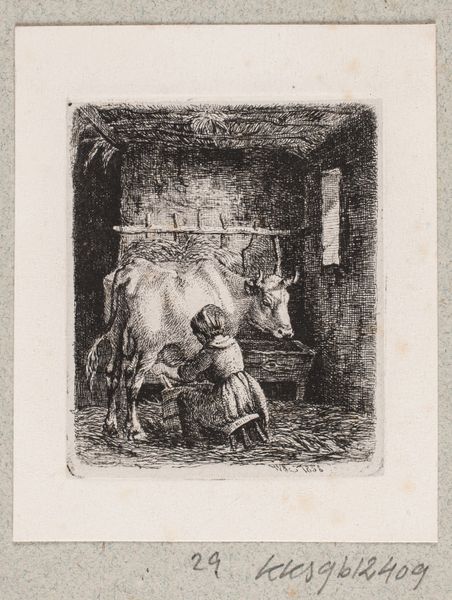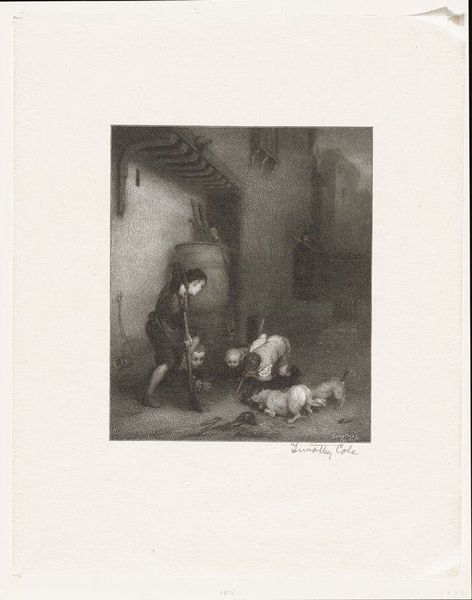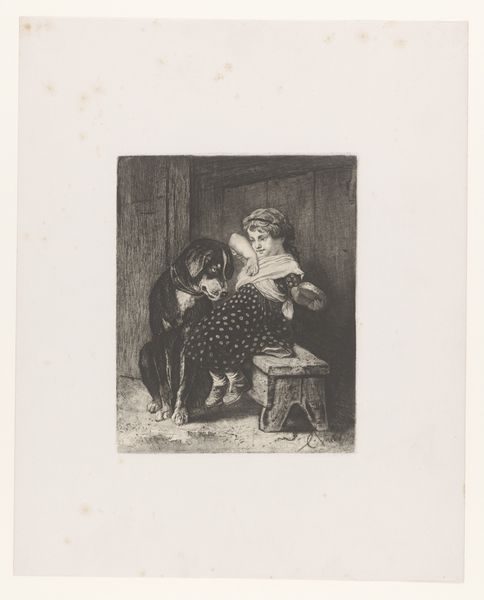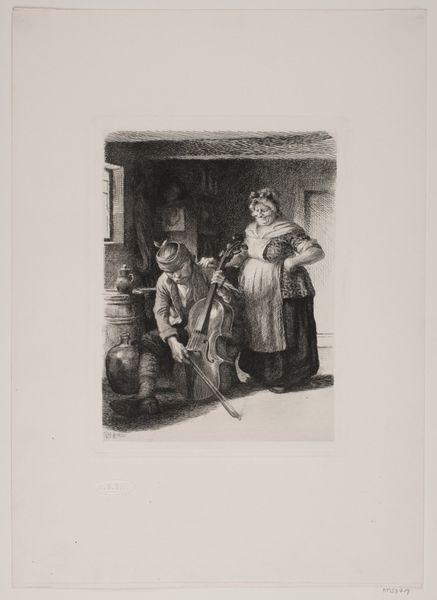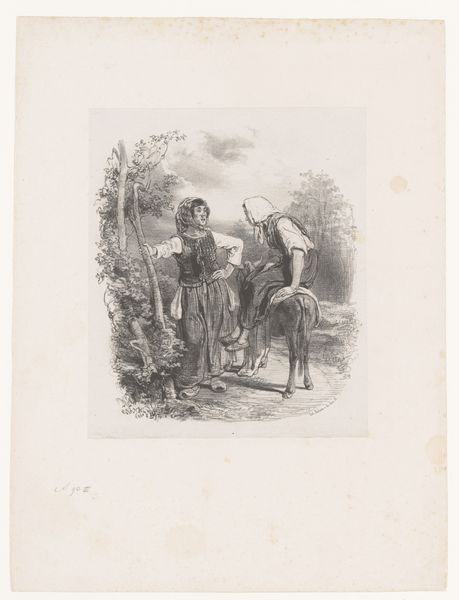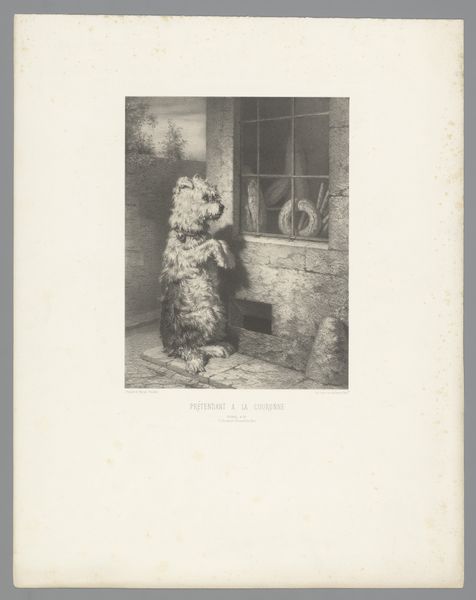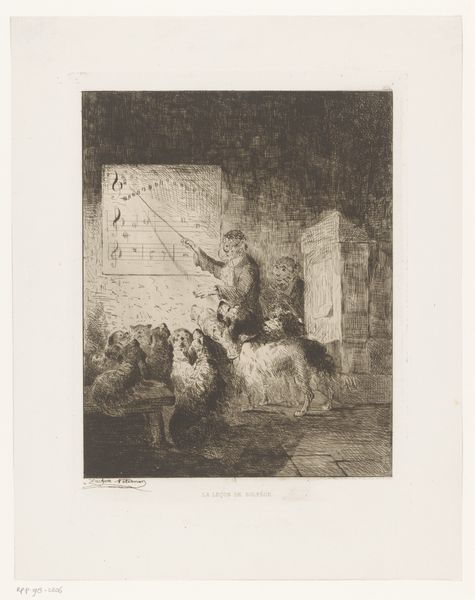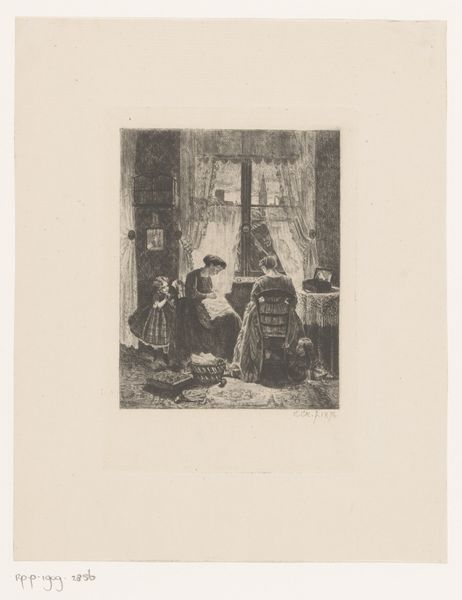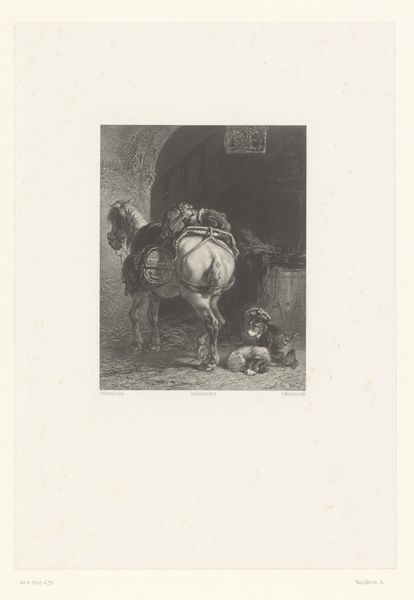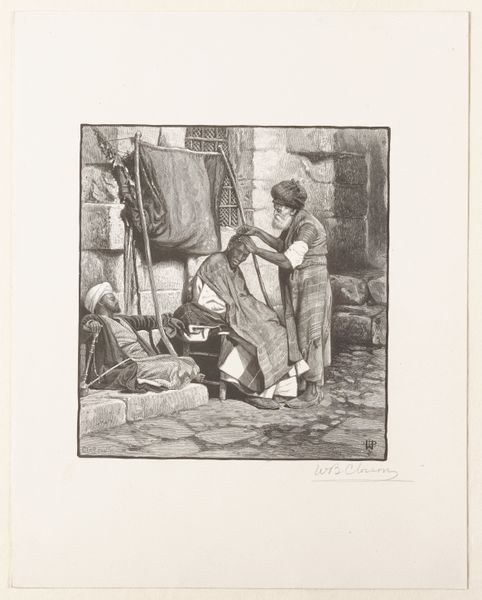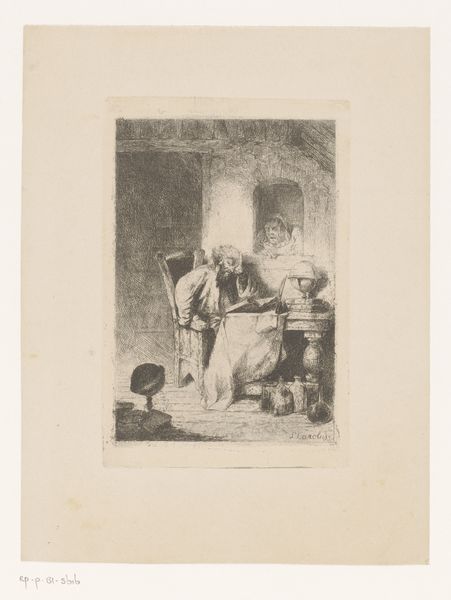
print, etching
#
negative space
# print
#
etching
#
line
#
genre-painting
#
realism
Dimensions: 250 mm (height) x 170 mm (width) (plademaal)
Curator: I’m immediately struck by the subtle light and shadow play in this etching. The starkness of the tones gives it a unique feeling of intimate observation. Editor: Agreed. Today, we're looking at "The Little Girl and the Dog Outside the Green Cellar," an 1891 print by Edvard Petersen, held here at the SMK. To me, it's a snapshot of everyday life elevated by Petersen's skillful rendering of light and form. But how does this fit into a broader context? Curator: For me, the charm lies in the ordinary, the almost documentary feel of the work. Look closely, it emphasizes the material reality: The rough texture of the cobblestones, the functional architecture of the cellar. One is pulled in immediately because of its honesty in production through etching techniques. It reveals Petersen's mastery over the labor-intensive printmaking craft in relation to realism as a style, emphasizing social observation over idealization. Editor: The etching relies heavily on line work, though—it provides a structure, dictating how we move around the picture plane. Note the use of negative space—it frames the subjects. Curator: Negative space used carefully to show isolation? Perhaps. But it speaks more loudly, at least, about labor in art. Consider how Petersen engaged the medium of printmaking; his active labor with acids and metal created a piece readily disseminated in society, beyond art and craft’s highbrow walls. His choice becomes, for me, quite critical. What are your views? Editor: An astute interpretation, indeed. The placement, scale, and interaction between child, dog, and cellar create tension between viewer, subjects, and setting. The little girl, pondering, seemingly paused on her errand... there’s almost a dreamlike feeling despite the quotidian elements. Curator: And where does the dream come from? Is it not perhaps her socio-economic position made available to us—a shared social position replicated, consumed through print’s material production? We ought not disregard Petersen’s involvement. The context he occupies should equally come into focus—print serving all economic classes. Editor: Perhaps... in this encounter, I see his composition prompting contemplation—on childhood, on companionship—far beyond class divisions. It captures something more than social circumstances. It captures universal experiences by focusing intently on universal humanistic principles in form. Curator: It makes one wonder who the girl is, or rather, was... How were images such as this one circulating and to what ends—what purposes or agendas? The etching gives one much to pause on regarding craft and circulation and cultural distribution. Editor: A captivating image—and equally fascinating lines of thought—all opened by form itself.
Comments
No comments
Be the first to comment and join the conversation on the ultimate creative platform.
